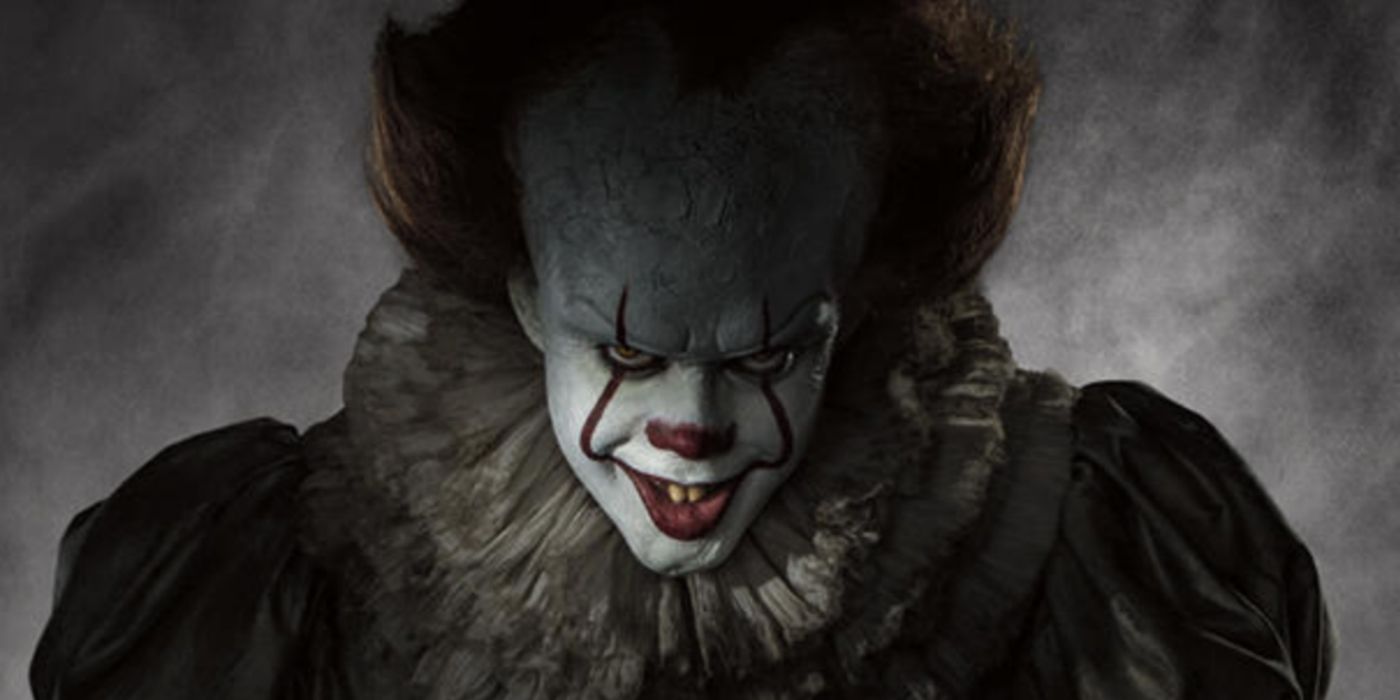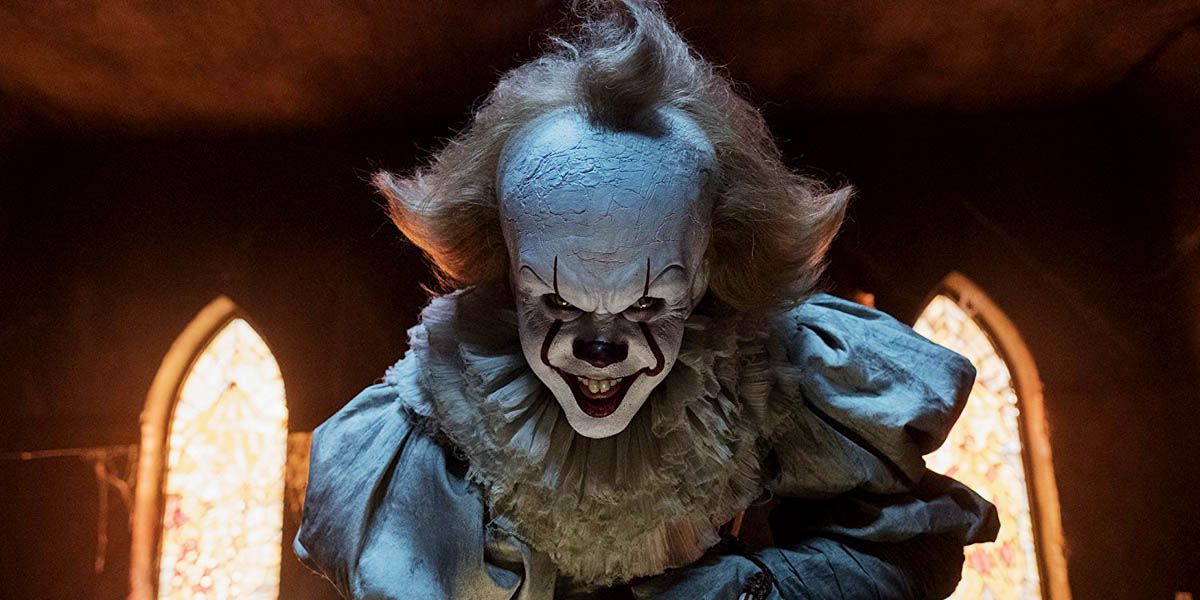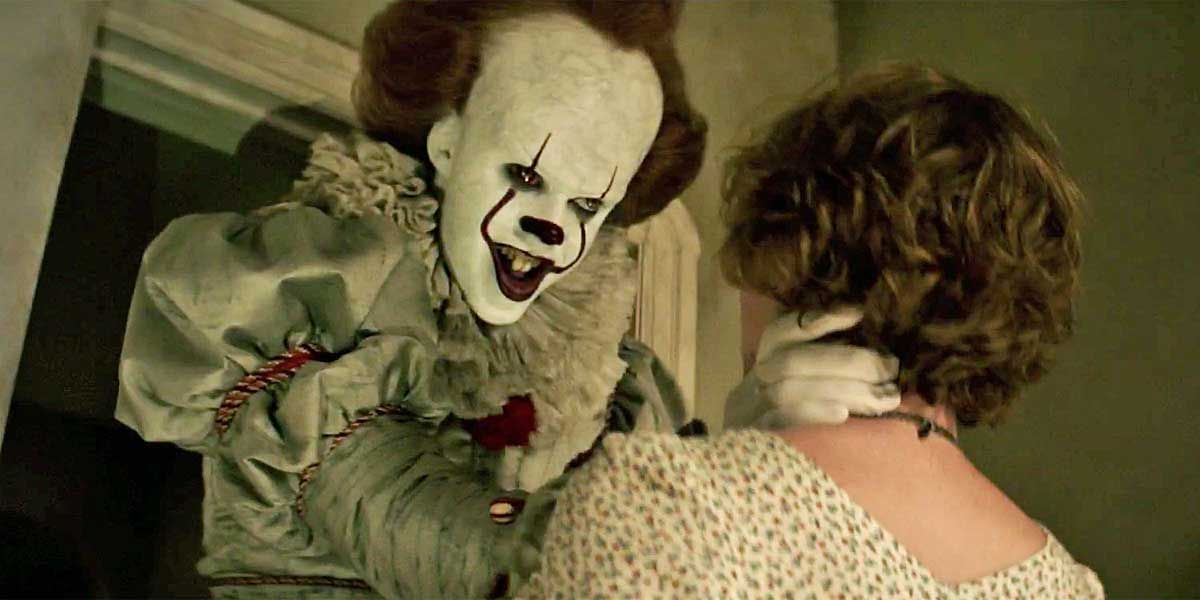Screenwriter Gary Dauberman seems to have accomplished his life-long mission: to frighten the heck out of audiences. Dauberman cut his teeth on the horror genre with 2007’s In the Spider’s Web and Bloodmonkey, before hitting his stride with 2014’s Annabelle and 2016’s Within. He also penned this summer’s terrifying sequel, Annabelle: Creation.
His true crowning achievement may be the big-screen adaptation of Stephen King’s epic novel, It, which has a screenplay by Dauberman, Chase Palmer and Cary Fukunaga. Now in theaters, the Andrés Muschietti-directed movie finds a group of misfit children banding together against a dormant evil that has recently reawakened.
Dauberman spoke with CBR about his take on It, delivering the scares, the success of Annabelle: Creation and The Conjuring's next spinoff, The Nun.
CBR: Your resume is composed almost entirely of horror movies. What makes that genre such a creative canvas for screenwriters?
Gary Dauberman: I don’t know how it is for other people. I’ve always been drawn to the supernatural or these mythical-folklore figures like Bigfoot as a kid. I was reading R.L. Stine and Christopher Pike and Lois Duncan. Then, there was a transition to Stephen King. There’s a real communal aspect of horror that I really respond to when watching a horror movie in the theater.
There’s a thrill to figuring out what the right timing is, and the right rhythm of a scare, that’s going to have that maximum impact that I find really challenging and addictive. It’s a great puzzle.
It remains one of Stephen King’s most beloved novels. What about this tale of terror resonates with readers?
All the best horror straddles a lot of different genres. It is not a straight horror movie. It has a lot of tones. Director Andy Muschietti handles it so well. It comes from a very real and honest place about what it is to be a kid, and then what is it to be an adult, and the things that we lose as we transition over into adulthood. While everybody is like, “Oh, I’m afraid of clowns and it’s Pennywise,” people love the camaraderie and the friendship of the Losers, these misfits, who have found each other and banded together. Most people really respond to that because they understand it and experienced it themselves. That’s why it’s so accessible and beloved as a novel. It’s not just one thing; it’s many things.
How intimidating was it not only tackling a Stephen King property, but whittling down this thousand-page book into one cohesive movie script?
The biggest challenge was managing the anxiety. There were a lot of decisions made before I came on board. One mandate was to focus just on the kids, to set it in the '80s, which is a decade I know very well, having grown up in it. There were some things decided early on which really helped with that challenge of, “How are we going to narrow this thing down?” That does become a problem trying to choose between favorite scenes, because they are all great. Then you have to look at what’s best for the movie. Then, you go, “OK, we unfortunately don’t have a lot of time to go off and explore this character’s backstory.” You focus on the Losers and let them guide the story and make sure you don’t go off on a tangent, which we did a couple of times. We tried to make things work that we knew were slowing the momentum down and the Losers’ story. We always just brought it right back to the Losers if we ever went off in some direction that wasn’t ultimately going to work.
After dissecting the book, what key scene absolutely had to make it into the big-screen adaptation and which one do you regret having to cut?
The key scene was obviously Georgie at the sewer and his death. In the book, it sets the table for fear and the horror that’s to come. It does that in the movie as well. It shows that Pennywise has some teeth. He kills. That was an obvious one.
With a lot of the stuff that could have gotten in there, I wish we could have explored some more of the supporting characters and their backstories and where they’ve come from. We had some of that in the script, and we shot some of it, but, again, Andy was right in cutting that stuff out. We have to focus on the Losers. But, I don’t sit there as I watch it and wince, going, “Oh man, I really wish…” I think this is the version it needs to be.
What were some of your early discussions with Andy concerning Pennywise’s appearance and demeanor?
We wanted to be true to the spirit of the book, of who Pennywise is in the book. Andy’s version of Pennywise’s appearance -- he got a lot of inspiration from the book. As far as the visuals go, Andy keyed in very early on what he wanted Pennywise to look like. What is so great about Andy is he can draw you what he’s thinking to such a detailed degree. We would sit at this diner. He would be drawing while we were talking. Then, he’d slide over the menu or the placemat he was drawing on and go, “This is how I want him to look.” “Yeah, that’s effectively creepy.” I even remember at some point the waiter came over and saw what he was drawing and was properly creeped out. So, you just defer to Andy and the book.
Being at New Line, we used the Freddy Krueger reference. We wanted Freddy to be his own thing, but we wanted to make sure Pennywise wasn’t usurping Freddy, because they are kind of similar, in a way. We didn’t want to go too broad with him. An important component of this conversation was Bill Skarsgård, who plays him so brilliantly. He had a really good compass on how far to push Pennywise into the clown territory and how far to pull him back, so he’s this strange, otherworldly creature. He does a great job of having both those things.
Page 2: [valnet-url-page page=2 paginated=0 text='Why It had to be a Hard R, the Future of the Conjuring Universe']
Often a movie receives its rating months after production has wrapped. How does that affect the way you craft your story?
It really didn’t, and I give so much credit to New Line. There was never a discussion of, “We have to make this PG-13 or R.” Anything I’ve worked on for them, there’s never been a discussion of ratings. You don’t want to really write towards one rating and I tend not to do that anyway. I always feel it’s easier to pull back for me than to push it, so I push it from the start. We knew this had to be R to be authentic and true to the book as much as possible. We just assumed it was going to be a hard R and had fun with that.
At the end of the day, how scary is It?
It’s terrifying. What I love about it is there’s a lot of various kinds of scares. I’m a big fan of that creeping sense of dread. For me, the best horror is when you are approaching the corner, but you are not yet turning it, and you are wondering what’s around the corner. It’s much scarier not knowing what’s around there. Andy has infused a lot of scenes with this creeping sense of dread that the book captures so well. But, then it has the big iconic moments and the set pieces. That’s what I love about it, is it doesn’t flatline on, “OK, it’s a jump scare.” Andy plays with a lot of different scares, which is this great reflection of playing around with a lot of different fears.
Your other film, Annabelle: Creation, is still killing it at the box office. During a summer when many franchises have failed to connect with audiences, what worked about Creation?
First and foremost, I think a lot of people have a trust in James Wan and his brand and that he’s going to deliver the goods. That’s the first thing for me. Second of all, David Sandberg directed a hell of a movie. He did a fantastic job. People responded to that. And, there hadn’t been a horror movie in a while, so, I think people were hungry for that as well. Most of it rests on James. He has a great relationship with his fans and with the audience. With The Conjuring Universe, people understand that now. And, the cast is great and it looks fantastic. It’s sold the quality there and people responded to it, and continue to do so.
Next up, you have The Nun in the pipeline, which premieres in 2018. When she was introduced in The Conjuring 2, was it simply a no-brainer to give this character her own spinoff?
I thought so. When I saw it for the first time, I said, “Oh, that’s a poster. That’s a movie.” Then you saw how the audience reacted to it. It was pretty much a no-brainer for me. Then, sitting down with James and hearing his ideas about her and where she came from, I was like, “I’m totally on board for this.”
That was a great experience. I was in Romania from early April to end of June. Just being a horror fan and being in Transylvania and visiting these castles, you are kind of in awe. And, being able to work with someone like Corin Hardy, who lives and breathes horror -- tat’s what is great about Sandberg, James, Corin and Andy, is that these guys have a true love and true passion for the genre, which is so nice and refreshing. They are going to go and do these bigger things, but they are going to always come back to horror, and influence the genre and be doing horror things, whether it’s writing or producing.
How does The Nun stand out compared to other Conjuring Universe movies?
James has done a really great job of making each movie its own thing. While each one fits within the universe, each has their own sense of style or flavor. For The Nun, we really drew on the Hammer movies. It’s very moody. It’s very atmospheric. It’s set in Romania. You have these big castles, surrounded by graveyards, with the fog and trees gnarled like skeletal fingers. It has that vibe to it that you don’t get in the others because of where they are set. The Nun has a distinct visual style. The story itself has a bit of an adventure component, which was fun to play around with.
It is in theaters now.



